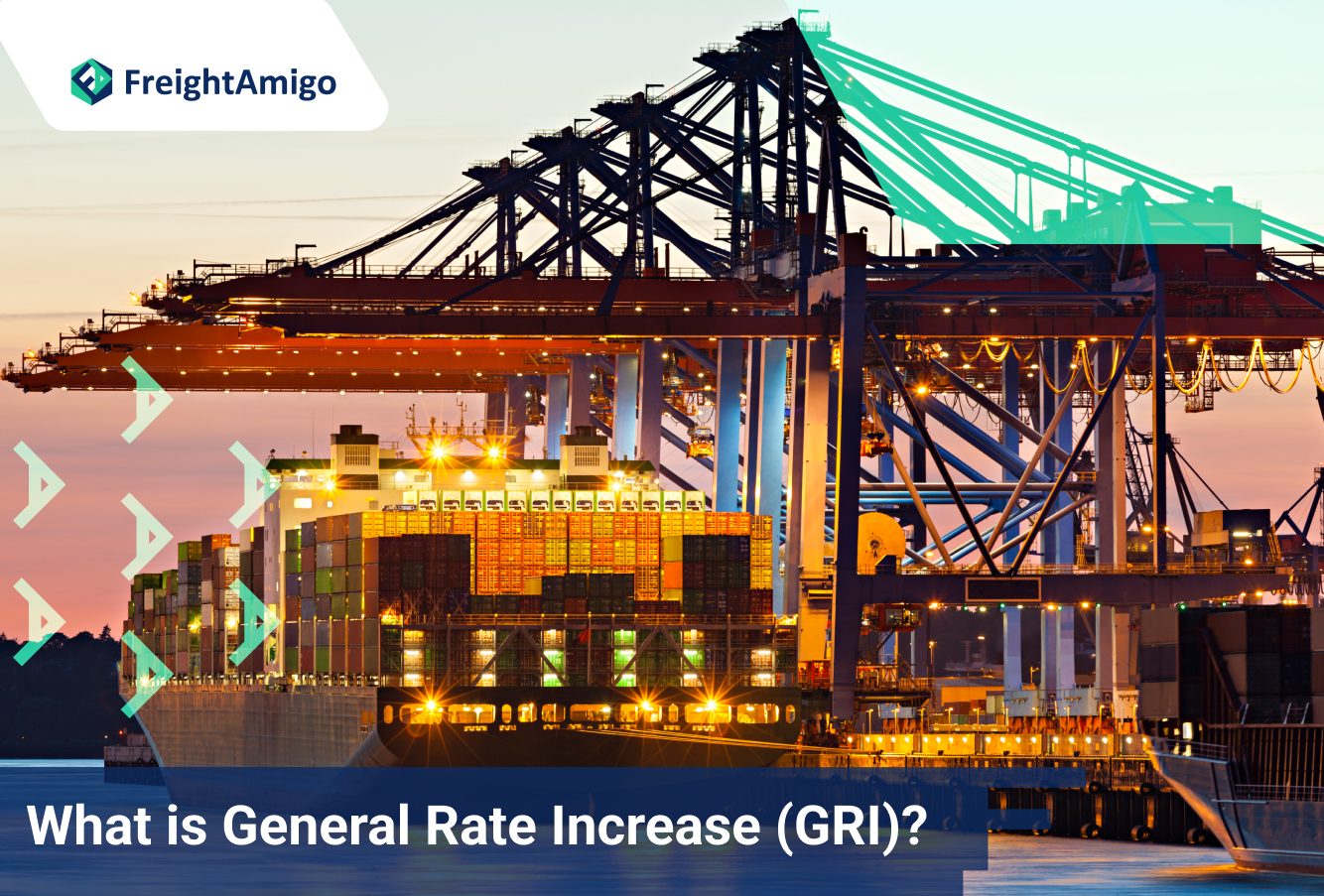What is General Rate Increase (GRI)?
Latest update on 26 March, 2024 by Caspian Ng– Marketing Analyst at FreightAmigo
Want to compare the best Express, Air Freight, Sea Freight, Rail Freight & Trucking rates so as to have better control on cost?
Definition of General Rate Increase (GRI)
General Rate Increase, commonly referred to as GRI, denotes the adjustment of container shipping rates across various shipping routes by shipping lines. GRIs are typically implemented by shipping carriers to increase their tariff rates applied to base rates. This adjustment can significantly impact shipping costs, particularly for businesses handling large freight volumes. GRIs are often observed during the peak shipping season when demand and supply dynamics influence market stability.
When Does a GRI Apply?
GRIs are usually dictated by the demand and supply dynamics of the market. These dynamics are influenced by factors such as trends, market stability, and the relationship between demand and shipping overcapacity. In most cases, GRIs occur once a year assuming stable markets. However, there have been instances where GRIs were applied multiple times or not at all.
The Necessity of GRIs
The international ocean freight industry operates within a highly competitive environment, where shipping carriers vie for competitive prices and routes. When one carrier lowers its prices to offer an attractive option, other carriers often follow suit, resulting in a downward trend in rates2. However, this trend eventually reaches a point where carriers need to recover and raise prices. This is when a GRI comes into play.
The Global Impact of GRIs
While GRIs theoretically have the potential to affect any geographical region for both imports and exports, recent trends have revealed a higher application of GRIs to imports originating from the Far East. However, it is important to note that the impact of GRIs can vary based on market dynamics and carrier decisions.
GRI Announcements and Carriers
Shipping lines are responsible for announcing GRIs and determining the extent of the increase. According to the regulations set by the Federal Maritime Commission, carriers must file any potential rate increase with them at least 30 days in advance. However, carriers have the flexibility to implement a lower GRI than what was initially filed. This flexibility allows carriers to adjust the increase based on market conditions and avoid potential business loss.
“A new or initial rate or change in an existing rate that results in an increased cost to a shipper may not become effective earlier than 30 days after publication. However, for good cause, the Federal Maritime Commission may allow the rate to become effective sooner.” – Federal Maritime Commission
The Impact of GRI on Pending Shipments
The impact of a GRI on pending shipments depends on the stage of the shipping process at which the GRI is implemented. It is essential to note that the shipping rate applicable to a shipment is determined on the day the cargo is handed over to the carrier, regardless of the actual departure date. To avoid the impact of an upcoming GRI, cargo must be handed over to the carrier before the GRI comes into effect.
Strategies to Minimize the Impact of GRI
As a shipper, it is crucial to anticipate and plan for GRIs to minimize their impact on your shipping costs. Here are some effective strategies to consider:
Set Your Cargo Collection Date Before the GRI
By setting your cargo collection date before the GRI comes into effect, you can ensure that your shipment will be subject to the existing rates rather than the increased rates due to the GRI.
Flexible Shipping Dates
If possible, try to have flexible shipping dates to avoid coinciding with a GRI. By adjusting your shipping dates, you can potentially sidestep the increased rates associated with a GRI.
Coordinate with Suppliers
Maintaining open lines of communication with your suppliers is crucial. By coordinating with them effectively, you can prevent any delays that might result in additional charges due to the GRI.
Compare Shipping Rates
Regularly comparing shipping rates among different carriers can help you identify the most cost-effective options. By exploring multiple carriers, you may find alternatives that are less affected by GRIs.
Conclusion
General Rate Increase (GRI) is an adjustment made by shipping lines to increase container shipping rates across various routes. Although GRIs can significantly impact shipping costs, shippers can minimize their impact through careful planning, flexible shipping dates, and effective coordination with suppliers. By understanding the nuances of GRIs and employing appropriate strategies, businesses can navigate the complexities of international shipping and optimize their freight pricing.
To navigate the complexities of international shipping, it is best to have the full support of logistics experts! To find out more about GRI, please visit the FreightAmigo enquiry page.
Read More:
What is Verified Gross Mass (VGM) | FreightAmigo
What is Rolled Cargo | Comprehensive Guide | FreightAmigo
What is Feeder Service | FreightAmigo
If you have any inquiries on logistics/supply chain, feel free to contact FreightAmigo now:
Chat with us online | Hotline: +852 28121686 | WhatsApp: +852 27467829









































